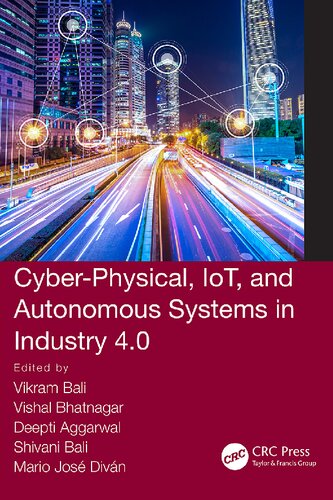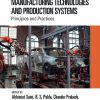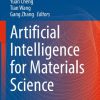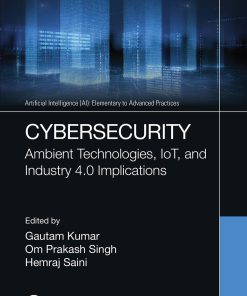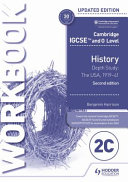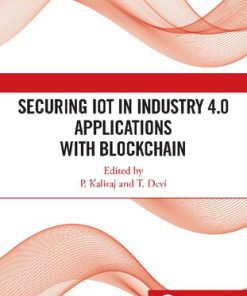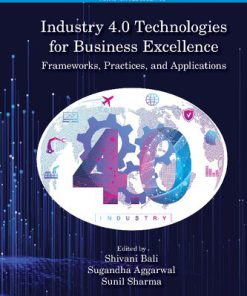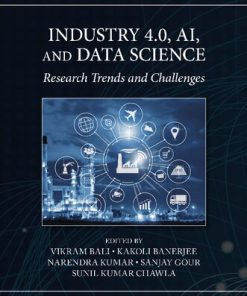Cyber-Physical, IoT, and Autonomous Systems in Industry 4.0 1st Edition by Vikram 9781000469462 1000469468
$50.00 Original price was: $50.00.$25.00Current price is: $25.00.
Cyber-Physical, IoT, and Autonomous Systems in Industry 4.0 1st Edition Vikram Bali – Ebook Instant Download/Delivery ISBN(s): 9781000469462, 1000469468
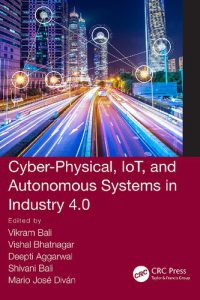
Product details:
- ISBN 10:1000469468
- ISBN 13: 9781000469462
- Author: Vikram
Cyber-Physical, IoT, and Autonomous Systems in Industry 4.0
Table contents:
1 Cyber Systems and Security in Industry 4.0
1.1 Introduction to Cyberspace, Cyber Systems, and Cyber Security
1.1.1 Cyber Threats, Vulnerabilities, and Risks
1.2 The Internet of Things and Security Issues
1.2.1 IoT Architecture and Protocol Stacks
1.2.2 Applications of the IoT
1.2.3 Security of IoT Systems
1.2.4 Securing IoT Devices and Networks
1.3 Industrial Internet of Things (IIoT)
1.3.1 Industry 4.0: Overview
1.3.2 IIoT Applications
1.3.3 IIoT Architecture
1.3.4 Impact of IIoT on the Economy
1.4 Security Challenges in Industry 4.0
1.4.1 How Secure Is IIoT?
1.4.2 IIoT Security Challenges
1.4.2.1 Device Hijacking
1.4.2.2 Data Siphoning
1.4.2.3 Denial of Service Attacks
1.4.2.4 Data Breaches
1.4.2.5 Device Theft
1.4.2.6 Man-in-the-Middle or Device “Spoofing”
1.4.3 IIoT Security Solutions
1.4.3.1 Endpoint Security-by-Design
1.5 Conclusions and Future Work
1.5.1 Conclusions
1.5.2 Limitations
1.5.3 Future Work
References
2 A Demand Response Program for Social Welfare Maximization in the Context of the Indian Smart Grid A Review
2.1 Introduction
2.2 A Smart Grid for India: A Dire Need
2.3 Progress of the Indian Smart Grid
2.3.1 SG Initiatives in India
2.3.2 Indian Governmental Energy Organization
2.3.3 Smart Grid Projects and Their Experience in India
2.4 DRP-based Social Welfare Maximization Model
2.5 Literature Survey, Research Findings, and the Framework of SWMM
2.6 Challenges and Discussion
2.7 Conclusion and Future Scope
References
3 Cloud Computing Security Framework Based on Shared Responsibility Models Cloud Computing
3.1 Introduction
3.1.1 Cloud Computing Reference Models
3.1.2 Cloud Computing Architecture
3.2 Related Work
3.2.1 Cloud Computing SRM for IaaS, PaaS, and SaaS
3.2.2 Analysis of SRM Implementation by Leading Cloud Service Providers
3.3 Proposed Cloud Computing Security Framework Based on an SRM and its Application
3.4 Results and Conclusion
3.5 Future Work
References
4 Performance Analysis of a Hypervisor and the Container-based Migration Technique for Cloud Virtualization
4.1 Introduction
4.2 Background and Motivation
4.2.1 Need for Virtualization in Cloud Data Centers
4.2.2 Evolution of Cloud Virtualization from Hypervisor to Containerization
4.3 Related Work
4.4 LXD/CR: A Container Migration Technique
4.5 Experimental Setup
4.6 Performance Evaluation of LXD/CR
4.6.1 Downtime and Migration Time
4.6.2 Number of Pages Transferred
4.7 Open Research Issues and Challenges
4.8 Conclusion and Future Scope
Bibliography
5 Segmentation of Fine-Grained Iron Ore Using Deep Learning and the Internet of Things
5.1 Introduction
5.2 Related Work
5.3 Problems and Challenges in Image Segmentation
5.4 Deep Neural Networks
5.5 Experiments and Results
5.5.1 The Dataset
5.5.2 Hardware and Software Configuration
5.5.3 Model Evaluation: U-Net
5.5.4 Edge Device Solution Evaluation
5.6 Conclusions and Future Work
Note
References
6 Amalgamation of Blockchain Technology and Cloud Computing for a Secure and More Adaptable Cloud
6.1 Basics of Cloud Computing
6.1.1 Some of the Essential Characteristics of Cloud Computing
6.1.2 Cloud Service Model
6.1.3 Types of Cloud Deployment Model
6.1.4 Advantages and Disadvantages of Cloud Computing
6.2 Existing Cloud Computing Security and Related Issues
6.2.1 Confidentiality
6.2.2 Integrity
6.2.2.1 Data Integrity
6.2.2.2 Virtualization Integrity
6.2.3 Availability
6.2.3.1 Data/Service Availability
6.2.3.2 Virtualization Availability
6.3 Limitations in Existing Cloud-based Security
6.4 Basics of Blockchain Technology
6.5 Advantages of Blockchain
6.6 The Working of Blockchain
6.7 Amalgamation of Blockchain Technology and Cloud Computing
6.8 Conclusion, Future Scope, and Limitations
6.8.1 Conclusion & Future Scope
6.8.2 Limitations
References
7 Cloud, Edge, and Fog Computing Trends
7.1 Introduction
7.2 Background
7.3 Cloud Computing
7.3.1 Advantages of Cloud Computing
7.3.2 Limitations of Cloud Computing
7.4 Edge Computing
7.4.1 Advantages of Edge Computing
7.4.2 Limitations of Edge Computing
7.5 Fog Computing
7.5.1 Advantages of Fog Computing
7.5.2 Limitations of Fog Computing
7.6 Edge Computing vs Fog Computing
7.7 Smart Devices
7.8 Trends of Cloud, Edge, and Fog Computing
7.9 Conclusion
Notes
References
8 Progression in Cyber Security Concerns for Learning Management Systems Analyzing the Role of Participants
8.1 Introduction
8.2 Literature Review
8.2.1 Cyber-Physical Systems for Education
8.2.2 Cyber Security in Learning Management Systems
8.3 Adoption of Cyber Security in LMSs by Instructors: A Case Study
8.4 Methodology
8.4.1 Measurement Model
8.4.2 Data Analysis Using Structural Equation Modeling (SEM)
8.5 Results and Discussion
8.5.1 Theoretical Implications
8.5.2 Practical Implications
8.6 Limitations and Future Scope
References
9 A Security Model for Cloud-computing-based E-governance Applications
9.1 Introduction
9.2 Security of E-governance Applications
9.3 Related Work
9.4 Threats to the Security of E-governance Services
9.5 Security Model for E-governance
9.5.1 Firewall and Access Control
9.5.2 Intrusion Detection and Intrusion Prevention System (IDS/IPS)
9.5.3 Encryption
9.6 Experiment and Results Analysis
9.7 Conclusion
9.8 Limitation and Future Scope
References
10 Automatic Time and Motion Study Using Deep Learning
10.1 Introduction
10.1.1 Research Contribution
10.2 Literature Review
10.3 Methodology
10.3.1 Micro-action Recognition
10.3.2 Macro-action Recognition
10.4 Case study: Order Preparation in a Distribution Center
10.4.1 Action-effectiveness Evaluation
10.4.2 Labor-productivity Metrics
10.5 Conclusions
Acknowledgment
References
11 Applications of IoT Based Frameworks in Industry 4.0 Applications of IoT Based Frameworks
11.1 Introduction
11.2 Literature Review
11.3 Proposed Framework
11.3.1 Radio Model
11.3.1.1 Degree of Proximity
11.3.1.2 Working Phases of the Proposed Framework
11.4 Applications
11.4.1 Application in Agricultural Industry
11.4.2 Application in Healthcare
11.4.3 Application in the Oil and Gas Industry
11.5 Results
11.6 Limitations
11.7 Conclusion and Future Work
References
12 Impact of Deep Learning and Machine Learning in Industry 4.0 Impact of Deep Learning
12.1 Introduction
12.2 Industry 4.0 and Its Key Players
12.3 Literature Survey
12.4 Challenges and Role of Machine Learning and Deep Learning in IR 4.0
12.4.1 Challenges in IR 4.0
12.4.2 Role of Machine Learning and Deep Learning in IR 4.0
12.4.2.1 Machine Learning Methods in IR 4.0
12.4.2.2 Deep Learning Methods in IR 4.0
12.4.2.2.1 Convolutional Neural Networks
12.4.2.2.2 Auto-encoders
12.4.2.2.3 Recurrent Neural Networks
12.4.2.2.4 Deep Reinforcement Learning
12.4.2.2.5 Generative Adversarial Networks
12.4.3 Advantages of Machine Learning and Deep Learning in IR 4.0
12.4.4 Applications of Machine Learning and Deep Learning in IR 4.0
12.5 Proposed Model for IR 4.0
12.6 Conclusions and Future Work
References
13 IoT Applications and Recent Advances
13.1 Introduction
13.2 IoT Services and Applications
13.2.1 Classification of IoT Services
13.2.1.1 Identity-related Services
13.2.1.2 Information Aggregation Services
13.2.1.3 Collaborative-aware Services
13.2.1.4 Ubiquitous Services
13.2.2 Prominent Applications of the IoT
13.2.2.1 The IIoT
13.2.2.2 The Internet of Medical Things (IoMT)
13.2.2.3 Smart Cities
13.3 Smart Environment Systems
13.3.1 Water Contamination Monitoring System
13.3.2 Air Pollution Monitoring System
13.4 Smart Intelligent Healthcare Systems
13.4.1 Research Frontiers in Smart Healthcare
13.4.2 The Role of Big Data Analytics in Smart Healthcare
13.4.3 The Role of Security and Privacy in Smart Healthcare Systems
13.5 IoT Communication and Network Protocols
13.5.1 Network Connectivity Protocols
13.5.1.1 Bluetooth
13.5.1.2 Wi-Fi
13.5.1.3 Zigbee
13.5.1.4 Z-Waves
13.5.1.5 Near Field Communication (NFC)
13.5.1.6 LoRa
13.5.1.7 6LowPAN
13.5.2 IoT Communication Protocols
13.5.2.1 MQTT
13.5.2.2 SMQTT
13.5.2.3 AMQP
13.5.2.4 CoAP
13.6 IoT Industrial Applications and Network Edges
13.7 Summary
13.8 Conclusions and Future Scope
References
14 A Spatio-temporal Model for the Analysis and Classification of Soil Using the IoT
14.1 Introduction
14.2 Literature Survey
14.3 Proposed Methodology
14.4 Experimental Work
14.4.1 Experimental Setup
14.4.2 Procedure
14.5 Comparative Study and Results
14.6 Data Analysis
14.7 Discussion
14.8 Conclusion and Future Work
References
15 A Critical Survey of Autonomous Vehicles
15.1 Introduction
15.2 History of Autonomous Vehicles
15.3 Technologies Used in Autonomous Vehicles
15.3.1 Sensors in Autonomous Vehicles
15.3.2 Forms of Camera
15.3.2.1 Omnidirectional Cameras
15.3.2.2 Cameras for Accidental Situations
15.3.3 Vehicular ad hoc Networks (VANET) in Autonomous Vehicles
15.4 Datasets Used for Autonomous Driving
15.5 Limitations and Challenges to Implementation
15.5.1 Cost of Vehicles
15.5.2 Approvals
15.5.3 Litigation, Liability, and General Opinion
15.5.4 Security
15.5.5 Privacy
15.6 Research Gaps
15.7 Conclusion
Bibliography
16 A Meta-learning Approach for Algorithm Selection for Capacitated Vehicle Routing Problems
16.1 Introduction
16.2 The Capacitated Vehicle Routing Problem
16.3 Meta-learning and Algorithm Selection
16.4 Meta-learning Process
16.4.1 Meta-features of the CVRP
16.4.2 Meta-labels
16.4.3 Meta-learning Technique
16.5 Meta-learning Experiment
16.5.1 Meta-knowledge Acquisition
16.5.2 Learning Phase
16.6 Results and Discussion
16.7 Conclusion, Limitations, and Future Scope
References
17 Early Detection of Autism Disorder Using Predictive Analysis
17.1 Introduction
17.2 Literature Review
17.3 Dataset Description
17.4 Algorithm Description
17.4.1 Support Vector Machine
17.4.2 Logistic Regression
17.4.3 K-Nearest Neighbor (k-NN)
17.4.4 Naive Bayes
17.4.5 Correlation Matrix
17.5 Results and Discussion
17.6 Conclusion
17.7 Future Scope
References
18 Computing Technologies for Prognosticating the Emanation of Carbon Using an ARIMA Model
18.1 Introduction
18.1.1 Formulation of the Problem
18.1.2 Research Objective
18.2 Research Strategy
18.3 Related Work
18.4 Research Framework
18.5 Dataset Description
18.6 Forecasting Model Performance Analysis
18.6.1 Autoregressive Integrated Moving Average (ARIMA) Model
18.7 Research Limitations
18.8 Conclusion and Future Scope
References
19 DWT and SVD-Based Robust Watermarking Using Differential Evolution with Adaptive Optimization
19.1 Introduction to Digital Watermarking
19.2 Background Work
19.3 Materials and Methods
19.3.1 Discrete Wavelet Transform (DWT)
19.3.2 Singular Value Decomposition (SVD)
19.3.3 Differential Evolution (DE)
19.3.4 Embedding Algorithm
19.3.5 Extraction Algorithm
19.4 Results
19.4.1 Imperceptibility Analysis
19.4.2 Robustness Analysis
19.5 Concluding Remarks
References
20 A Novel Framework Based on a Machine Learning Algorithm for the Estimation of COVID-19 Cases
20.1 Introduction
20.2 Literature Review
20.3 Principles of the SIR Model
20.4 Implementation of the Back-end
20.4.1 Data Understanding
20.4.2 Data Preparation
20.4.3 Understanding Exploratory Data Analysis (EDA)
20.4.4 Modeling Spread
20.4.5 Evaluation Walk-through
20.4.6 Overfitting
20.4.7 SIR Modeling
20.5 User Interface (UI) Implementation
20.6 Analysis
20.6.1 Hover-over India Map
20.6.2 Statewise updates
20.7 Results
References
21 Assessing the Impact of Coronavirus on Pollutant Concentration A Case Study in Malaysia
21.1 Introduction
21.2 Background Study
21.3 Proposed Methodology
21.4 Results and Discussion
21.5 Conclusion
21.6 Limitations and Future Work
Notes
References
22 A Comprehensive Review of SLAM Techniques
22.1 Introduction
22.2 SLAM and Its Methodologies
22.2.1 Relative Position Measurement
22.2.2 Absolute Position Measurement
22.2.3 Encoders
22.3 Mapping the Environment and Navigation
22.3.1 Mapping
22.3.2 Localization
22.3.2.1 Vehicle Model
22.3.2.2 Sensor Model
22.3.2.3 State Estimation
22.3.2.4 Support for SLAM Using a Kalman Filter
22.3.2.5 Particle Filter
22.4 Navigation
22.4.1 Definition of the SLAM Problem
22.4.2 Homogeneous Coordinates
22.4.3 Homogeneous Taking Euclidian into Consideration
22.4.4 Transformation
22.4.5 Translation: (Three Parameters) ➔ (Three Translations)
22.4.6 Rotation: (Three Parameters) ➔ (Three Rotations)
22.4.7 Rotation Matrices
22.4.8 Rigid Body Transformation: (Six Parameters) ➔ (Three Translations + Three Rotations)
22.4.9 Similarity Transformation: (Seven Parameters) ➔ (Three Translations + Three Rotations + One Scale)
22.4.10 Affine Transformation: (Twelve Parameters) ➔ (Three Translations + Three Rotations + Three Scales + Three Spheres) (Mautz & Tilch, 2011)
22.5 Simulation
22.6 Hardware Requirements and Implementation in the Real World
22.6.1 Single Board Computers
22.6.2 Inertial Measurement Unit (IMU)
22.6.2.1 Odometry Model of Robot with Wheel Encoders
22.6.3 Basic Principle of the Accelerometer
22.6.4 Controllers
22.7 Limitations
22.8 Future Scope
22.9 Conclusion
References
23 A Novel Evolutionary Computation Method for Securing the Data in Wireless Networks
23.1 Introduction
23.2 Ant Colony Optimization
23.2.1 Biological Analogy
23.2.2 ACO Algorithm
23.3 Artificial Bee Colony Optimization
23.3.1 Bee Foraging Behavior
23.3.2 Modified Approach
23.3.3 Algorithm
23.4 Cuckoo Approach
23.4.1 Introduction
23.4.2 Cuckoo Reproductive Method
23.4.3 The Lévy Flights Mechanism
23.4.4 Algorithm
23.5 Particle Swarm Optimization (PSO)
23.5.1 Introduction
23.5.2 The History of Particle Swarm Optimization
23.5.3 Algorithm
23.6 Comparative Study of PSO and CS
23.6.1 Experiments
23.7 Comparative Study between Ant Colony Optimization and Cuckoo Search Optimization
23.8 Comparison Between ACO, ABC, PSO, and Cuckoo Search
23.9 Implementation of Cuckoo Search Algorithm
23.10 Conclusion
Bibliography
Index
Read Less
People also search:
cyber-physical
cyber-physical systems
internet of things and cyber-physical systems
acm transactions on cyber-physical systems
cyber-physical systems security
You may also like…
Computers - Security
Security and Resilience of Cyber Physical Systems 1st Edition Krishan Kumar
Computers - Computers - General & Miscellaneous
Computers - Security
Security and Resilience in Cyber Physical Systems Detection Estimation and Control Masoud Abbaszadeh
Education Studies & Teaching - Studying & Test Preparation
Computers - Networking
Computers - Internet & World Wide Web
Securing IoT in Industry 4.0 Applications with Blockchain 1st Edition P Kaliraj
Engineering - Social & Cultural Aspects of Technology
Engineering - Engineering - General & Miscellaneous
Computers - Artificial Intelligence (AI)
Industry 4.0, AI, and Data Science: Research Trends and Challenges 1st Edition Vikram Bali (Editor)

